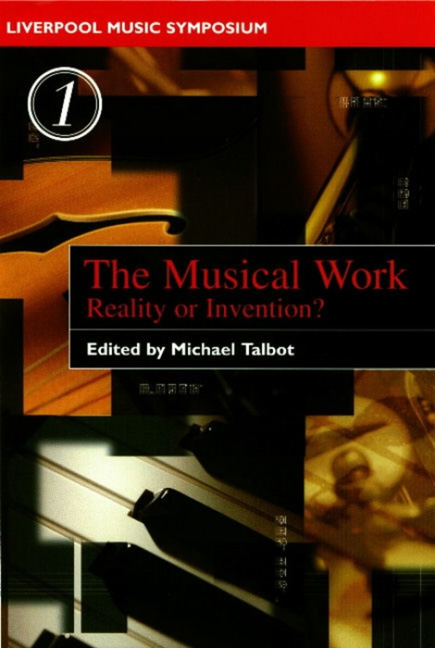Book contents
- Frontmatter
- Contents
- Notes on Contributors
- Introduction
- 1 Some Thoughts on the Work in Popular Music
- 2 Intertextuality and Hypertextuality in Recorded Popular Music
- 3 Work-in(g)-Practice: Configurations of the Popular Music Intertext
- 4 Work and Recordings: The Impact of Commercialisation and Digitalisation
- 5 The Practice of Early-Nineteenth-Century Pianism
- 6 Looking Back at Ourselves: The Problem with the Musical Work-Concept
- 7 ‘The Work’: An Evaluative Charge
- 8 The Work-Concept and Composer-Centredness
- 9 The Musical Artwork and its Materials in the Music and Aesthetics of Busoni
- 10 Re-composing Schubert
- 11 ‘On the Problems of Dating’ or ‘Looking Backward and Forward with Strohm’
- Index of Musical Compositions and Collections
- Index of Personal Names
4 - Work and Recordings: The Impact of Commercialisation and Digitalisation
- Frontmatter
- Contents
- Notes on Contributors
- Introduction
- 1 Some Thoughts on the Work in Popular Music
- 2 Intertextuality and Hypertextuality in Recorded Popular Music
- 3 Work-in(g)-Practice: Configurations of the Popular Music Intertext
- 4 Work and Recordings: The Impact of Commercialisation and Digitalisation
- 5 The Practice of Early-Nineteenth-Century Pianism
- 6 Looking Back at Ourselves: The Problem with the Musical Work-Concept
- 7 ‘The Work’: An Evaluative Charge
- 8 The Work-Concept and Composer-Centredness
- 9 The Musical Artwork and its Materials in the Music and Aesthetics of Busoni
- 10 Re-composing Schubert
- 11 ‘On the Problems of Dating’ or ‘Looking Backward and Forward with Strohm’
- Index of Musical Compositions and Collections
- Index of Personal Names
Summary
A dormant literature, music requires the awakening of interpretative performance. Until recently, recordings were fixed, and also permanent, documentation of a performance. For instance, the radio broadcast of Bruckner's Fifth Symphony conducted by Wilhelm Furtwängler on 25 October 1942 is preserved on record as a finite and specific interpretation of a recognisable musical work. In fact, it can be argued that every performance is a unique ‘work’ whose character should be permanent.
When a musical work becomes a recording, however, the technology used in making the recording can blur the definition of ‘permanent’. In March 1967 Otto Klemperer went into London's Kingsway Hall with his New Philharmonia Orchestra and a recording team from EMI Records to record Bruckner's Fifth Symphony. Not only is Klemperer's interpretation of the symphony very different from Furtwängler's, but the construction of the recording differs as well, because this is a studio recording. In a studio recording parts of a piece are played several times, and then the sections (in the form of numbered takes) deemed best by the producer and artist are edited together into a master tape. But it is important to understand that the resulting performance could conceivably be remade using other takes.
This resulting performance can also be remade by a record label's marketing or A & R (artists and repertoire) department. In the case of new recordings, the A & R department typically has the first say about a project; the marketing staff are involved only after the record is completed. In the case of recompilations, however, the rôles are often reversed: the marketing staff may well invent the theme, and then the A & R staff are asked to provide material that suits the theme. This scenario is different from that of a producer re-editing a complete symphony, because artistic concerns are secondary. The marketing staff are searching not for the finest takes but for a saleable recompilation of material from archival master tapes. As a result, movements (or even shorter segments) are removed from a complete musical composition and placed in a new context, usually in association with a theme whose appeal is non-musical. Examples of this practice in classical music are ‘Eternal Russia’, ‘The Women in My Life’ and the top-selling ‘Karajan Adagio’.
- Type
- Chapter
- Information
- The Musical WorkReality or Invention?, pp. 88 - 109Publisher: Liverpool University PressPrint publication year: 2000



